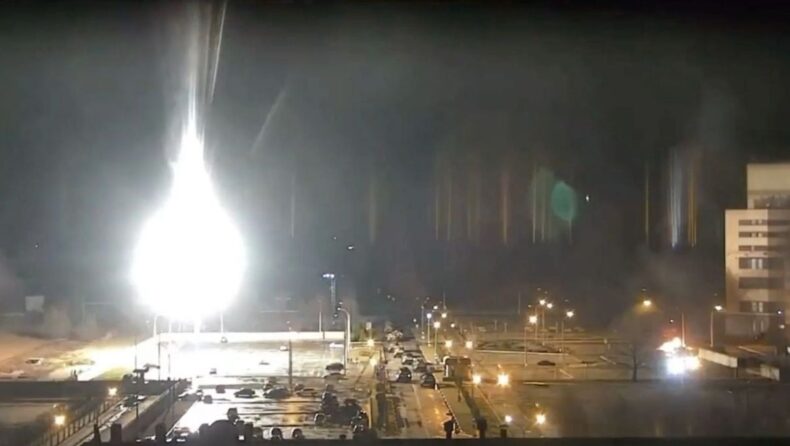A fire broke out at Europe’s biggest nuclear power plant, Zaporizhzhia, following an attack by Russian troops on Friday. According to the authorities, the fire has been extinguished, and no critical damage has been done to the infrastructure.
At 2:30 A.M local time on Friday, it was reported by Ukrainian authorities that the nuclear power plant was on fire. The power plant is located nearby Enerhodar in southeastern Ukraine. According to International Atomic Energy Agency (IAEA), it is the largest of its kind in Ukraine and contains six of the country’s 15 nuclear energy reactors.
A section of the Russian troops broke away from the battle going on in Enerhodar and made way to the Zaporizhzhia power plant, located a few kilometers away. Russian tanks broke through the block-post and opened fire at it.
It wasn’t until 6:20 A.M local time that the fire was extinguished. The Ukrainian State Emergency Service assured that the plant did not sustain any ‘critical’ damage. IAEA also assured that fire did not affect any ‘essential’ equipment and that the staff were mitigating any damage, citing Ukrainian authorities.
Nuclear regulators and government bodies in the United States and Ukraine also said that there had been spikes in radiation levels and things appear to be normal. According to reports, the Russian forces have now ‘occupied’ the Zaporizhzhia nuclear power plant (NPP).
“Currently, the site of the Zaporizhzhia NPP is occupied by the military forces of the Russian Federation,” the regulatory body said in a statement. Energoatom, Ukraine’s nuclear power operator, informed via Telegram, “The administrative building and the checkpoint at the station are under occupiers’ control.
The plant’s staff continues to work on power units, ensuring the stable operation of nuclear facilities. Unfortunately, there are dead and wounded among the Ukrainian defenders of the station.”
The State Nuclear Regulatory Inspectorate has said that the power plant’s six reactors remain intact. While reactor unit 1’s compartment auxiliary buildings have been damaged, the systems and components important to the safety of the NPP are operational.
“With Unit 1 out of order, four out of the six units are being cooled down while one unit is providing power,” they added. “At present, no changes in the radiation situation have been registered,” the regulatory body assured.
Following the attack, Ukrainian President Volodymyr Zelensky accused Russia, in a Facebook post, of intentionally firing at the Zaporizhzhia nuclear power plant. “Russian tanks are shooting at the atomic blocks equipped with thermal imagers.
They know what they are shooting at. They’ve been preparing for this (attack),” he said in the post. He accused Moscow of trying to ‘repeat’ the Chernobyl nuclear disaster. He said he had spoken with international leaders, including US President Joe Biden, about the crisis at the Zaporizhzhia nuclear plant.
He was referring to the Chernobyl disaster that took place in 1986 in Soviet Ukraine. It is considered the worst nuclear accident in history. Zelensky called it a “global catastrophe that affected the lives of hundreds of thousands of people and had a lasting impact on the country.”
“No country other than Russia has ever fired on nuclear power units,” Mr. Zelensky said in a video message. Mr. Zelensky appealed for global help, pointing out how, for the first time in the history of mankind, a terrorist state was resorting to nuclear terror.
If there were to be an explosion, it would be the end of Europe. “Only immediate European action can stop Russian troops,” he said.
Graham Allison, professor at the Belfer Center, Harvard University, told CNN that the worst-case scenario could happen if the fire or attack reached the reactors and disrupted their cooling system causing a meltdown and release of large amounts of radioactivity. However, he said, “not all fires in a power plant have catastrophic consequences.”
Published By – Vanshu Mehra
Edited By – Krititka Kashyap













